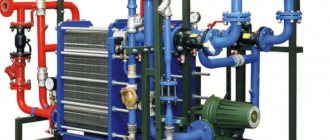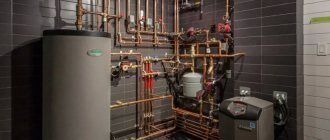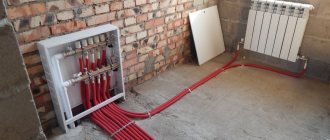For people, an important criterion for choosing a method of heating a home is the amount of costs for installing and maintaining the heating system. Nobody wants utility bills to have a big impact on the family budget.
There is a large selection of autonomous heating systems on the market, which differ from each other in price, complexity of operation, operational efficiency, and environmental impact. Unfortunately, it is difficult to find one that is both cheap, maintenance-free, environmentally friendly and easy to use. Therefore, you need to choose which aspect is more important to you.
What it is?
Autonomous heating is an individual heating system in which all components are installed in the house . Why is this method popular? It's all about saving on utility bills. The owner himself regulates the temperature and heating time, unlike a centralized system, which is also not efficient and sometimes does not provide the proper level of heat. There are also frequent cases of accidents and preventive maintenance.
To install individual heating in a private home, you just need to purchase the necessary equipment.
Boiler operating rules
If the boiler is an open type, then it must be installed on the floor, which is covered with a fireproof layer. If the room in which the boiler room is located has a small area, then it is necessary to provide an additional ventilation system. The chimney must provide the necessary draft, which is needed for normal combustion, so you need to take care of its arrangement in advance. By installing a stabilizer, you don’t have to worry about the traction not being at the proper level.
Boiler chimney diagram
Classification
The main element in autonomous heating systems are heating boilers. They are distinguished by the type of fuel used:
- gas;
- electrical;
- solid fuel;
- liquid fuel.
Regardless of the type of boiler, all autonomous systems operate on the same principle:
- Fuel is loaded into the boiler.
- The boiler then burns it, thereby heating the water.
- Heated water is passed through pipes.
- Pipes with hot coolant heat the room.
The total cost of a heating boiler takes into account not only the price of the fuel itself, but also the efficiency of its supply equipment. The higher it is, the more heat you can get.
In terms of year-round performance, devices with less processing power are preferable. It is advisable to choose a boiler with automatic control, which adapts the characteristics to the prevailing conditions and allows you to save money. For the correct and economical functioning of the heating system, you also need to fine-tune its operation.
To reduce costs, it is recommended to choose a high-capacity boiler, such as a wood gasification boiler or a modern and fully automated biomass unit.
Remember that a fireplace or stove can be an excellent additional source of heat in the home that will reduce heating costs. It makes sense to choose a device with storage capabilities. Heat can also be distributed throughout the home using an air heater system or a power source in a water jacketed fireplace.
Types of systems
Autonomous heating systems differ according to the following characteristics:
- Type of combustible material. In the field of heating suburban housing, a wide variety of thermal energy generators are used, operating on all available types of combustible materials. This can be gasoline, fuel oil, kerosene, oil, fuel briquettes made from peat, sawdust, husks, corn cobs, hay, and straw. In areas where gas has not yet been supplied or where creating a connection to an existing gas pipeline is too expensive, propane is used, which is filled into the gas tank with a special machine.
- By type of energy. Combustion energy is used, electricity received from a centralized supplier or produced independently - using a diesel generator and solar panels.
- According to the type of transportation of coolant to radiators. The circulation of hot water can be organized according to a single-pipe or two-pipe scheme. A combined method can also be used.
- By type of heat generator. Boilers are used in which combustion energy is transferred to a coolant, which then releases heat to radiators. Electric convectors are also used to heat the air “on site”.
Electric heating
This type works on electric boilers. Its advantages:
- low noise level during operation;
- affordable price;
- reliability of design;
- easy installation.
The service life of electric boilers is 15 years . Heating a house with this system makes it possible to program the air temperature. This can be done using a temperature sensor, which is best installed in the coldest room.
Minuses:
- high cost of electricity;
- the need for constant access to it.
Self-installation
It is possible to begin installation of autonomous heating only after the creation and approval of the project. In accordance with the project, materials and equipment are purchased.
It is quite possible to equip home heating using unconventional alternative methods with your own hands. As for autonomous gas heating, self-installation in this case is extremely undesirable. This is due to the increased danger when using gas, as well as the fact that acceptance of equipment into operation must be carried out by specialized services. And it is carried out only in relation to equipment and work performed in accordance with the standards and requirements.
Solid fuel heating
For many years, heating using solid fuels: coal, wood or biomass . Their prices vary and depend primarily on the amount of heat generated during combustion. Accordingly, the more you get, the lower the cost of purchasing fuel will be.
Environmentally friendly, selected coal remains very popular. You usually have to pay a little more for it than a regular one, but for many it is the most convenient heating method. For coal combustion, boilers with storage tanks that automatically supply fuel are provided. Their maintenance is less labor-intensive, unlike boilers, the fuel of which must be prepared manually. Once loaded, the charcoal needs to be replenished every few days.
How much does autonomous gasification at home cost?
The costs of installing an autonomous gas system are very individual. In addition to the characteristics of the site, soil and house, they also depend on the region and local prices for liquefied gas.
As an example, we can calculate the costs of autonomous gasification of a cottage in the Moscow region. So, to heat a house with an area of 150 square meters. m will need to install a gas tank with a volume of at least 3000 liters.
In this case, the costs will be as follows:
- For the gas holder itself you will have to pay about 165,000 rubles;
- Excavation work and connecting gas pipes to the house will cost about 20,000 rubles;
- Annual refueling costs will be 51,000 rubles.
Energy from renewable sources
The most efficient heating equipment is considered to be one that uses renewable energy. In cold climates, these are primarily heat pumps, which convert free energy from earth, water or air into heat. This, in turn, powers the domestic heating system and heats the water.
A heat pump is one of the most modern heating devices that does not require maintenance, is inexpensive, and environmentally friendly. It is well suited for those who care about comfort.
Heating stoves and their main characteristics
Modern stoves for heating a home are not only quite miniature in size, but are also equipped with convectors that provide more efficient heating of rooms. One of the “advantages” of stoves is that they quickly and effectively “dry” the room, removing excess moisture from it. This is especially true in the autumn and spring periods. Despite their small size, these stoves are powerful enough to warm up a room even in the coldest winter. This, by the way, is one of the disadvantages of the stove, since its power is clearly not enough to warm up the entire house.
Which is better to choose?
A cost-effective solution for a private home would be gas heating. If there is no access to it, then you should pay attention to solid fuel. The system itself should be built according to a single-pipe scheme with a liquid coolant. By making this choice, you can save a lot on pipe laying and at the same time maintain the ability to control the temperature in each room.
If you want to install heating without pipes and radiators, then a stove made of metal or brickwork is perfect for this.
Equipment of the house with autonomous gas. How does it work?
The autonomous gas supply system is extremely simple - next to the house, underground, there is a special container with gas (gas holder), from where it enters the house through pipes.
The appearance of the gas holder resembles a cylindrical tank. The device is capable of storing liquid gas for a minimum of 1 year and can withstand pressures up to 1.8 MPa.
The gas storage tank inside is covered with a special layer that serves to protect it from corrosion, and the walls themselves are made of high-strength steel that can withstand both gas pressure and the aggressive effects of natural forces.
Types of gas tanks
The home owner can choose a gas tank taking into account the volume of consumption, quality and price. There are 2 types of gas tanks:
- with variable gas volume;
- with a constant volume of gas.
The peculiarity of variable models is that in them the gas pressure inside is almost identical to atmospheric pressure.
For domestic use in your country house, it is enough to purchase a tank with a volume of 2.5 to 5 “cubes”. It is best to choose reliable models, taking into account the type of soil and volume of consumption.
When purchasing, you should also pay attention to the service life of the container. Cheap gas tanks without a neck will have to be replaced every 20 years.











